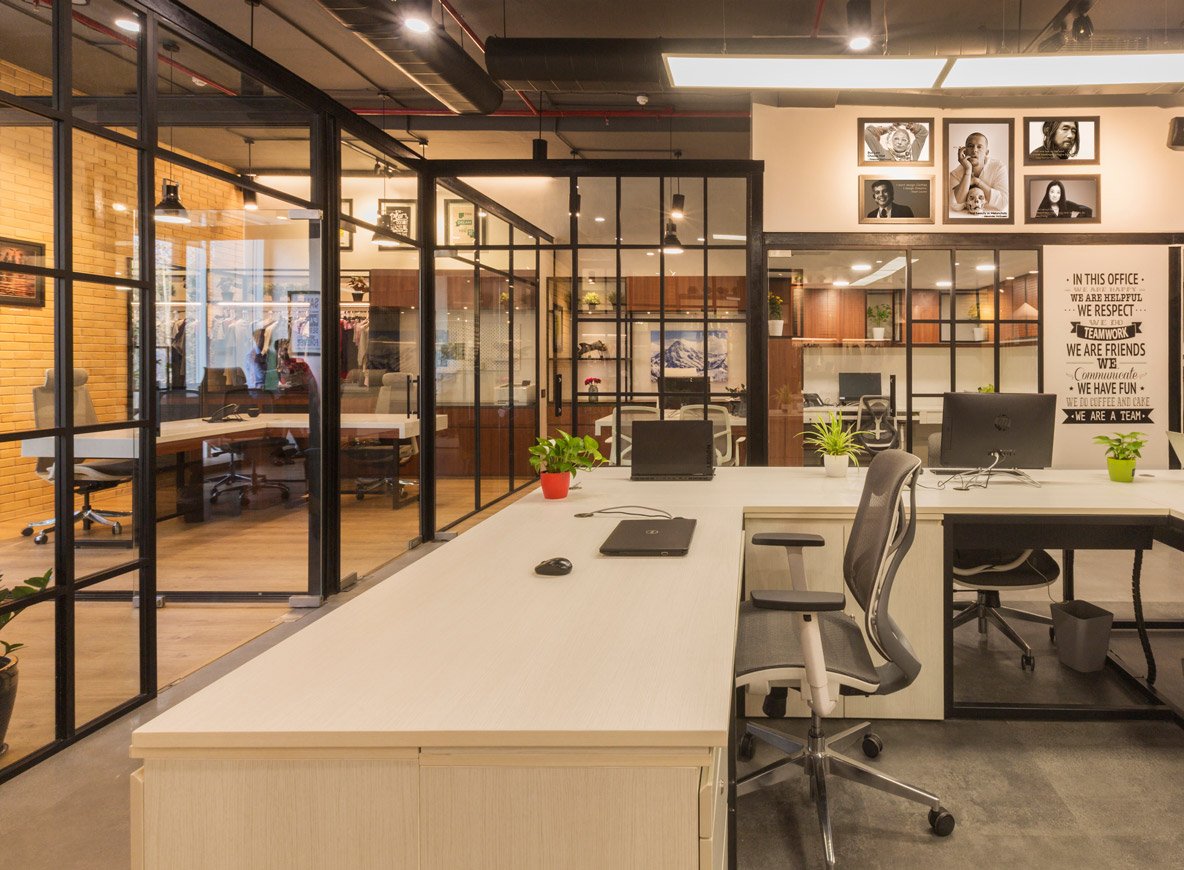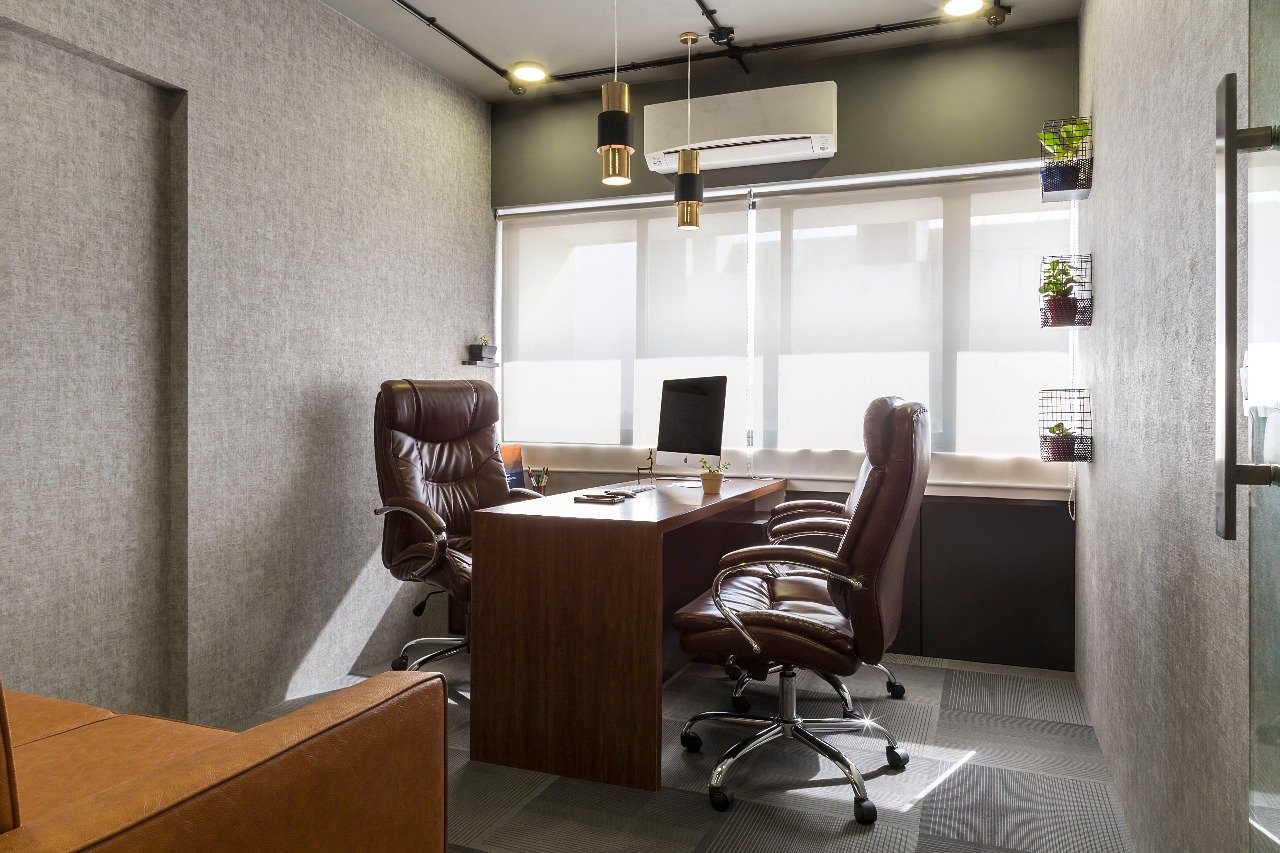Do you want to create a work environment that is comfortable, attractive, and improves the health and productivity of your employees? Well, then, you need to consider the role of ergonomics in your office interiors.
Ergonomics is the science of designing products, systems, and environments that fit the needs and capabilities of those who use them.
Studies have shown that ergonomic interiors can improve employee productivity, engagement, and satisfaction. In this blog, let’s explore more about it in detail, like the key elements, the benefits, and how to implement ergonomics in office interiors.
What is Ergonomics?
Ergonomics is derived from the Greek words “ergon” (work) and “nomos” (laws). It studies how humans interact with their work environment and how to design it to fit their needs and abilities. The ergonomic design follows three basic principles:
Fit: The design should match the physical and mental characteristics of the user.
Function: The design should enable users to perform their tasks effectively and efficiently.
Form: The design should be appealing and satisfying to the user.
What are the Benefits of Ergonomic Office Interiors?
Creating ergonomic office interiors offers myriad benefits that ripple throughout the organisation. Here are some:
1. Increased Comfort
Ergonomic workstations promote physical well-being, which helps employees to stay focused and engaged in their tasks, enhancing overall productivity.
2. Enhanced Efficiency
Ergonomic tools and furniture facilitate smooth movements, reducing the time and effort employees need to perform tasks more efficiently.
3. Improved Focus and Concentration
Proper ergonomics ensure employees can concentrate on their work instead of dealing with discomfort, leading to higher quality work and faster task completion.
4. Reduced Absenteeism
Ergonomic office interiors contribute to healthier employees who are less likely to take sick days, reducing absenteeism and ensuring a consistent workflow.
What are the Key Elements of Ergonomic in Office Interiors?
When designing ergonomic office interiors, several key elements play a vital role in creating a workspace. Here’s a closer look at these elements and why they are essential in promoting a comfortable and efficient work environment:
1. Ergonomic Furniture Selection
Ergonomic furniture forms the foundation of a comfortable workspace. Opting for ergonomic chairs is essential, ensuring proper lumbar support and adjustable features tailored to individual needs. Likewise, adjustable desks allow employees to switch between sitting and standing positions, promoting dynamic movement throughout the day.
Additionally, the strategic use of artificial and natural lighting is crucial. Natural light not only reduces eye strain but also boosts mood and energy levels, while carefully placed artificial lighting enhances visibility and reduces glare, creating a well-lit and inviting ambience.
2. Workspace Layout and Design
Adequate space and movement have a fundamental impact on productivity and collaboration. By allowing ample room for employees to move freely, the office promotes a sense of openness and reduces feelings of confinement. Thoughtful arrangement of workstations strikes a balance between collaboration and privacy.
Collaborative spaces encourage teamwork, while private areas provide focus and concentration. Moreover, integrating biophilic design elements, such as indoor plants and natural textures, enhances aesthetics and improves air quality and overall employee well-being.
3. Ergonomic Accessories and Tools
Attention to ergonomic accessories is crucial for a seamless workflow. Specially designed ergonomic keyboards and mice minimise strain, allowing employees to type and navigate comfortably for extended periods. Proper eye placement at eye level and integrating multiple monitors reduce neck strain and enhance multitasking capabilities.
Furthermore, effective cable management and clutter reduction ensure a tidy workspace, preventing accidents and creating an environment conducive to productivity.
How to Implement Ergonomics in Office Interiors?
Implementing ergonomics in office interiors ensures a productive and healthy work environment. This involves several key steps:
1. Conducting Ergonomic Assessments and Surveys
To create ergonomic interiors, it's essential to start with a deep understanding of your workforce's needs and preferences. This begins by involving employees in the design process through ergonomic assessments and surveys.
By actively seeking their input, you can identify specific challenges they face in their daily work routines. Individual needs and preferences can vary significantly, and these insights serve as the foundation for crafting a workspace that caters to each employee's unique requirements.
2. Collaboration Between Employers, Designers, and Ergonomics Experts
The process of designing ergonomic interiors requires a multidisciplinary approach. Employers, designers, and ergonomics experts should collaborate closely to create an environment prioritising employee well-being.
Professional consultation in office design is invaluable as it combines the expertise of designers who understand aesthetics with ergonomics experts who focus on functionality and health. By customising office interiors based on company culture and the workforce's specific needs, you can ensure that the workspace aligns with the organisation's goals and values.
3. Regular Evaluation and Adaptation of Ergonomic Solutions
Ergonomic design is not a one-time task; it's an ongoing commitment to employee well-being and productivity. This involves monitoring employee feedback and adjusting designs accordingly. Regular evaluations help identify areas that may need improvement.
Moreover, staying updated with the latest ergonomic innovations and technologies ensures that the office space remains at the forefront of ergonomic excellence. By continuously adapting and enhancing ergonomic solutions, businesses can create an environment that evolves with the changing needs of their workforce, fostering a healthier and more productive workplace.
Transform Your Office, Transform Your Productivity!
In traditional office design, common ergonomic issues often plague employees, resulting in discomfort, reduced productivity, and even health problems.
However, the relationship between ergonomics and productivity is evident. Ergonomic office interiors enhance comfort and boost efficiency, focus, and overall work quality. They contribute to a healthier, more engaged workforce and reduce absenteeism, benefiting employees and employers.
For those seeking to transform their workspaces into ergonomic havens that inspire and invigorate, Hipcouch offers expert guidance and cutting-edge interior design solutions.
Book a consultation with us now!





